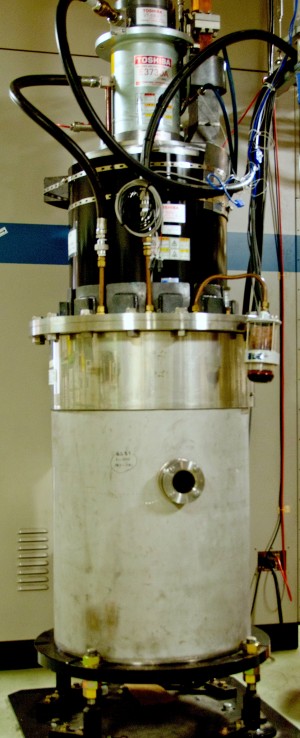Superconducting cavities accelerate particles using radiofrequency (RF) power. But where does the power to accelerate a beam by millions of electronvolts come from? The ILC’s power source can provide only about 100 watts, but to push that power up to the required level you need a device called a klystron.
The klystron is a power amplifier. It can expand a few tens of watts into millions, or megawatts. Each ILC klystron will supply amplified power to 39 superconducting cavities for the baseline design.
How does it work? Inside the klystron is a gun that sends out electrons in long pulses. These electrons will be accelerated by high voltage, which was generated by a modulator. Then this energetic particle beam crosses a cavity inside the klystron, where it’s coupled with RF power that comes from the power source. When the particles interact with the RF field, their velocity changes, producing faster and slower electrons. Those particles then passes through the klystron’s drift tube, where the faster electrons catch up with slower particles, causing them to bunch together. In consequence, bunch spacing corresponds to the frequency of the RF source. These bunches intensify as they travel through the klystron, until their pulses correspond to the desired frequency power.
Finally, the particles reach an empty cavity called the “output” or “catcher” cavity. In an accelerator, particles pick up energy from a RF field in the superconducting cavity— but in the klystron output cavity, the opposite occurs. The cavity is tuned so that the particles will decelerate, giving their energy to the cavity. It’s this amplified power that is sent to an accelerator such as the ILC. These RF fields travels from the klystron output cavity to accelerator cavities along several meters of hollow rectangular metal tubing called waveguide. Meanwhile, the spent electrons plough into the aptly named ‘collector.’
SLAC accelerator physicist Chris Nantista explains that it’s possible to modulate how this power is distributed, “We have motorised devices that control how much power is peeled off from the main waveguide and into each cavity.” This allows scientists to adjust for differences in a cavity’s ability, lest they push past its limits.


Recent Comments